Buddhist Digital Archives (BUDA) in Focus - Part 2
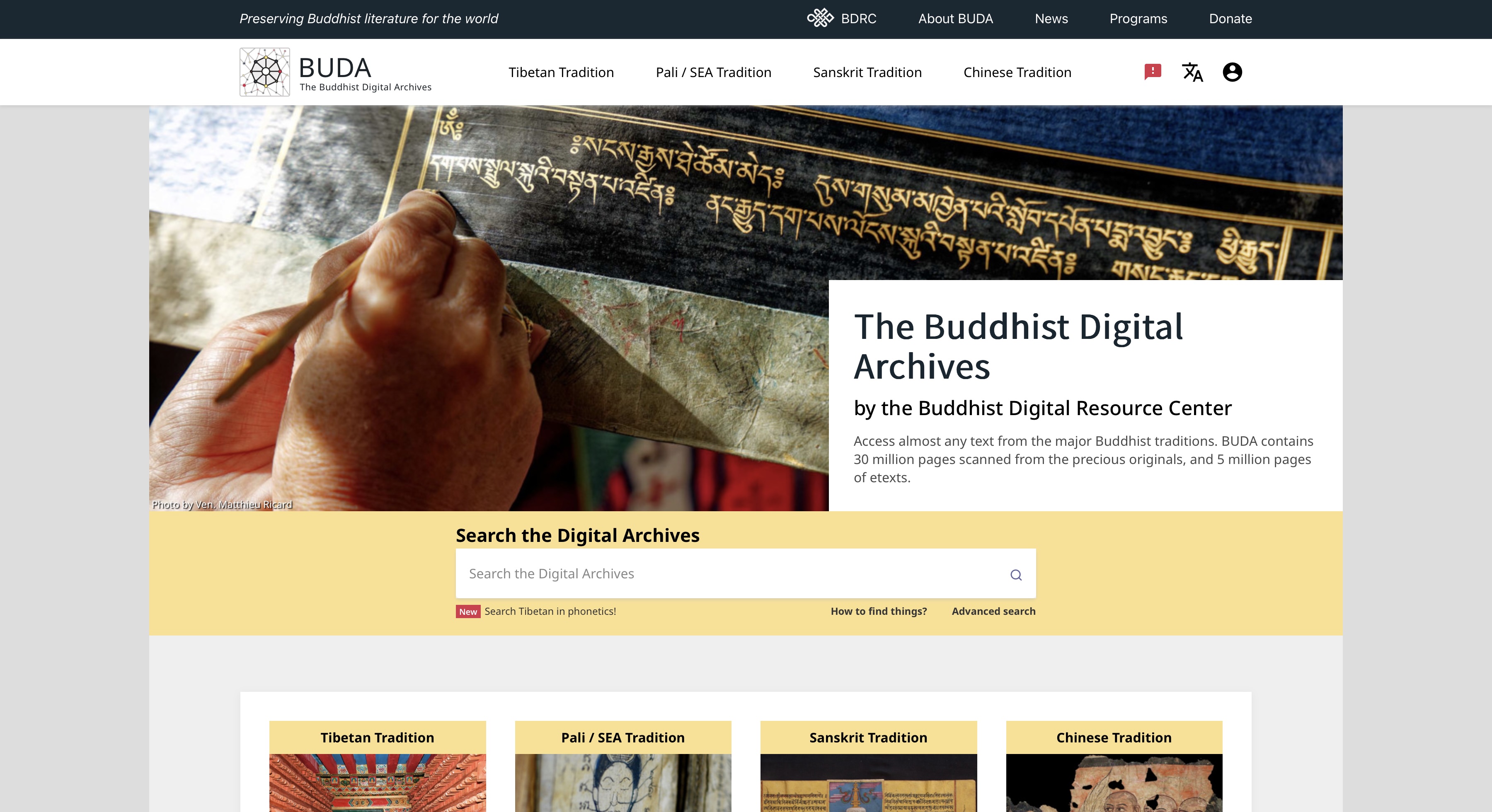
How to Use BUDA
Table of Contents
Navigating BUDA: Search Features that Empower Research
As outlined in a previous post, BUDA provides a wide range of tools designed to support access, analysis, and discovery: From navigating linked data to using the integrated e-text reader or downloading high-quality digital manuscripts. Building on this foundation, the search functionality plays a central role in locating specific persons, places, or texts within the archive. With its flexible filters, phonetic and multilingual input options, and structured metadata, BUDA’s search interface offers an efficient and precise way to explore the breadth of its collections.
By default, the search function is set to “Versions”, meaning that any query will return results corresponding to specific instances or editions of texts (such as print editions, block prints, or digital scans) and is generally used to search for texts by their titles.
However, by switching to “Advanced Search” in the main search bar, it becomes possible to refine the type of content being queried. On the right-hand side of the search bar, a dropdown menu allows for the selection of specific search categories. These include: Works, Texts, Etexts, Persons, Places, Topics, and Collections. 1
For the purposes of this post, only three of these categories will be introduced: Persons, Places, and Topics. Each serves as a different starting point for exploring BUDA’s organised data and vast digital holdings.
Person Search: Connecting Biographies and Texts
BUDA contains detailed biographical records for thousands of individuals important to Buddhist history (including authors, translators, lineage holders, and religious teachers).
How to Search
- Open Advanced Search.
- Select “Persons” from the dropdown menu.
- Enter the name of the individual using one of the following:
- Tibetan script
- Romanized Wylie transliteration
- Phonetic spelling (for example, “Jigme Lingpa” or “Jikmay Lingpa”) 2
–
Example: BDRC provides a screenshot of a search query for the historical figure Gampopa.
–
Gampopa Sonam Rinchen, a renowned eleventh-century Tibetan scholar and meditation master who played a central role in the development of the Kagyu lineage of Tibetan Buddhism.
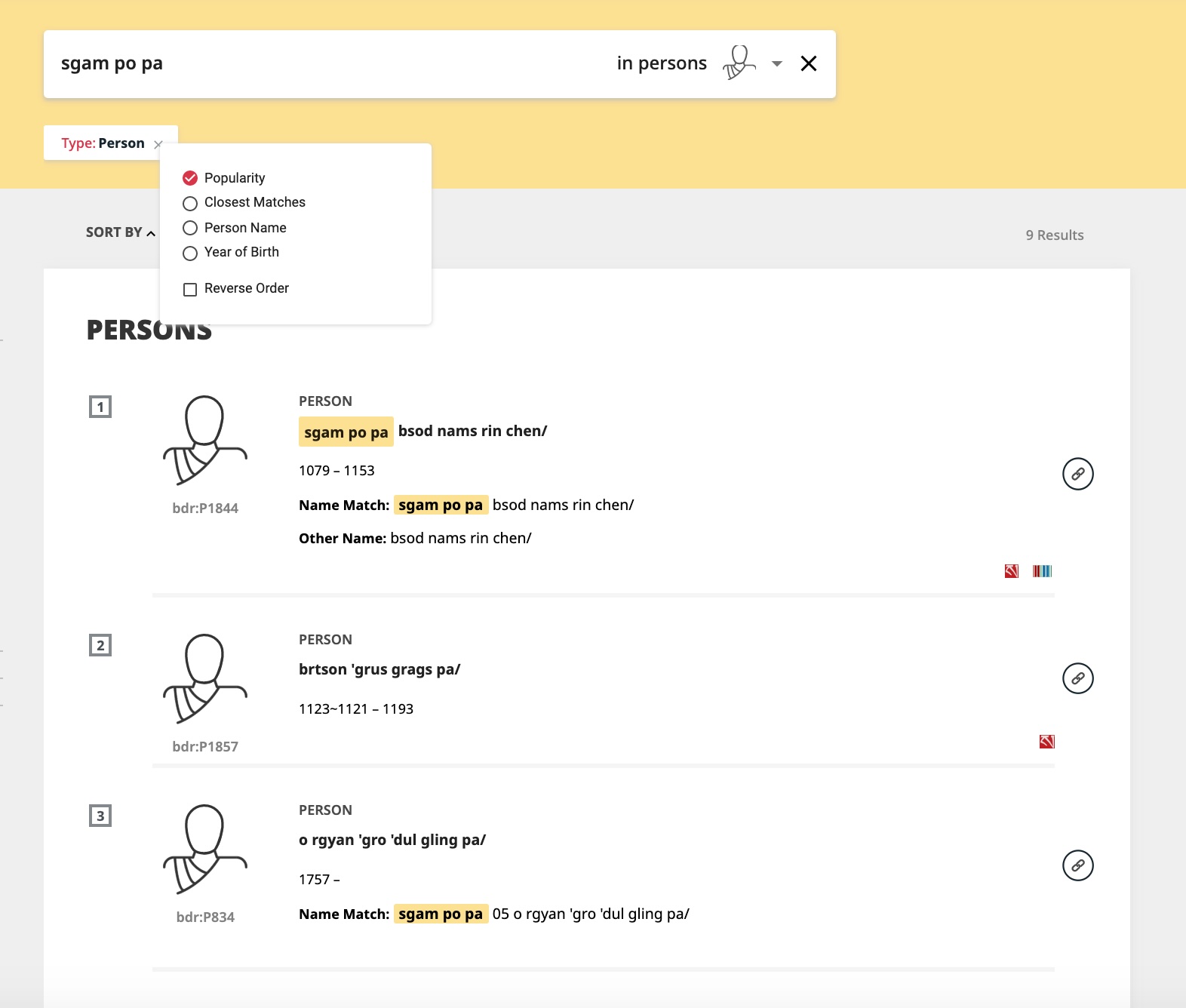
The search engine recognizes various spellings and transliterations, enabling results even with approximate input.
What the Results Include
- Primary person record with life dates and biographical notes
- Associated works, including texts authored, translated, or transmitted
- Relational data, such as links to teachers, students, lineages, and institutions
- Auto-suggest and phonetic matching, supporting flexible search input
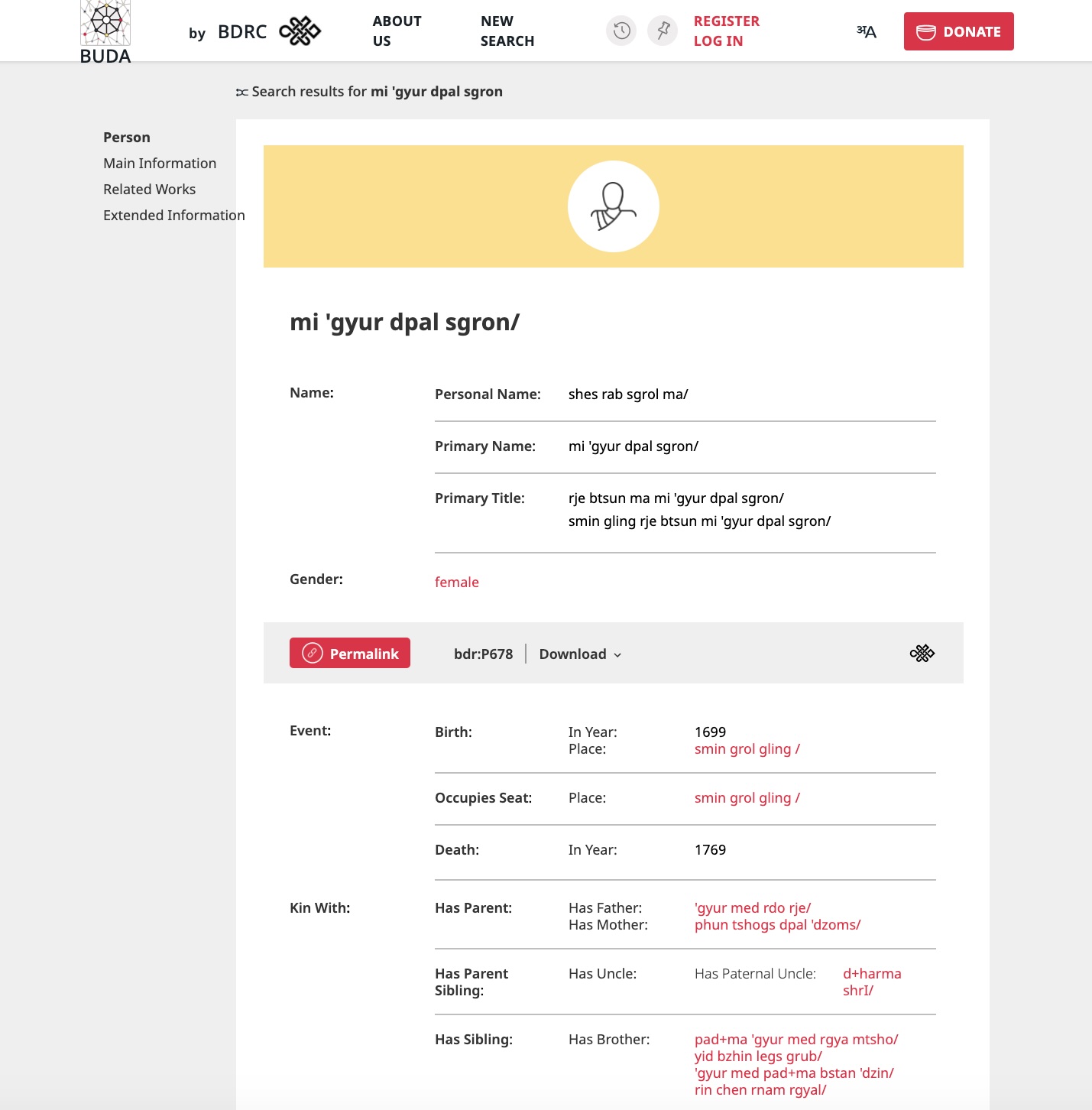
Why Use This Filter
- This search mode supports research on historical figures, spiritual lineages, and the networks involved in the transmission of Buddhist literature.
Place Search: Mapping Sacred Geography
BUDA furthermore maintains comprehensive records of locations such as monasteries, sacred sites, and historical regions that have played a role in the development of Buddhist traditions.
How to Search
- Open Advanced Search.
- Select “Places” from the dropdown menu.
- Enter the name of the location using:
- Tibetan script
- Romanized Wylie transliteration
–
Example: I searched for Derge Parkhang.
–
Derge Parkhang, the famous printing house established in the eighteenth century, which I spelled phonetically. The search returned various types of results, including both the physical location and scriptures originally printed there.
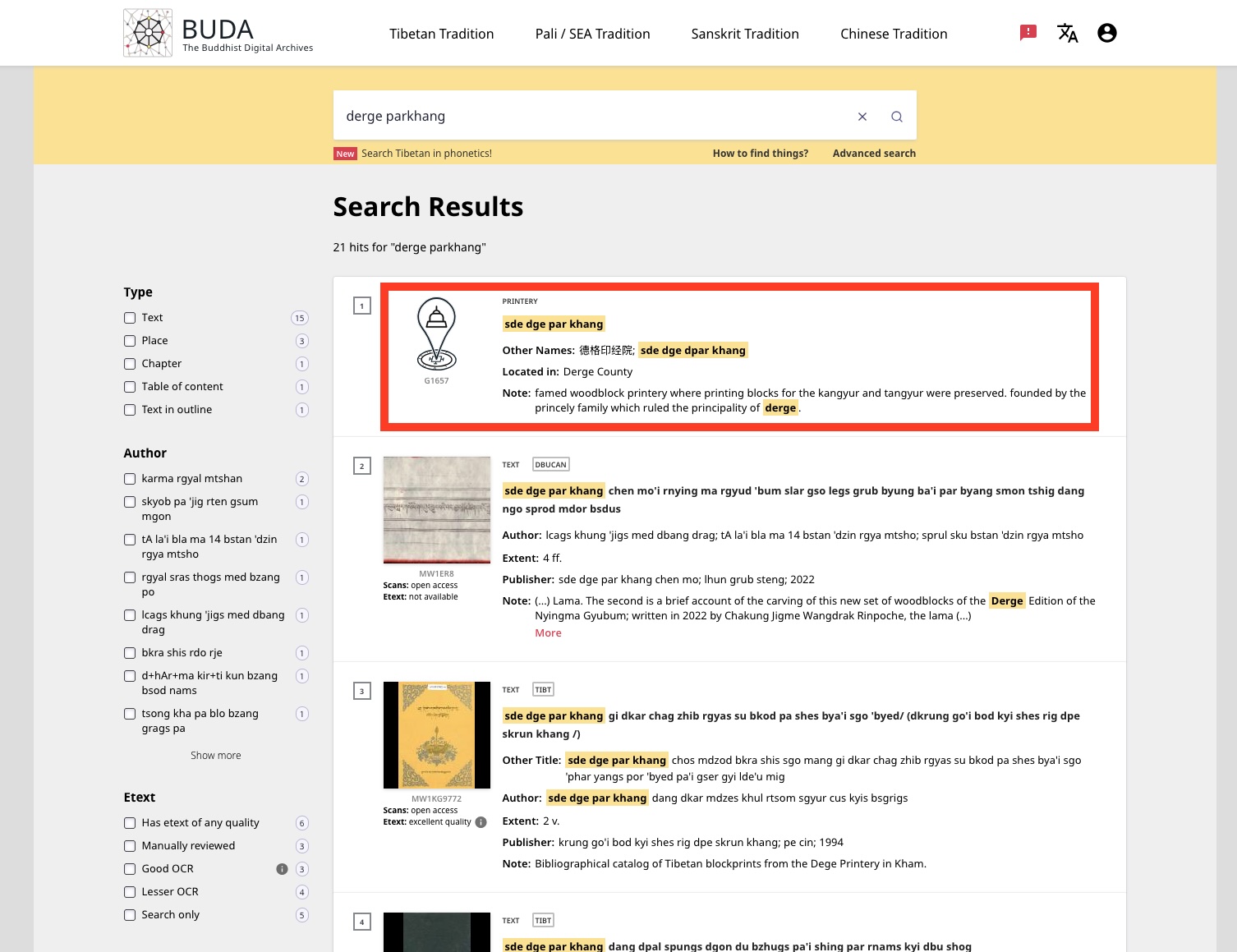
What the Results Include
- Primary place record for a site, town, region, or monastery
- Linked places, such as institutions within the area
- Metadata, including:
- Multilingual place names (Tibetan, Chinese, Sanskrit, etc.)
- Geographic coordinates and interactive maps
- Historical background and descriptions
- Associated persons or organizations
–
Example: To refine the results, I selected the filter Type → Place.
–
This narrowed the results down to three entries. The first one is the correct match. Clicking on this result opens a detailed record containing all available metadata and extended properties, including the exact geographic location of Derge Parkhang on the map. see: Derge Parkhang on BUDA
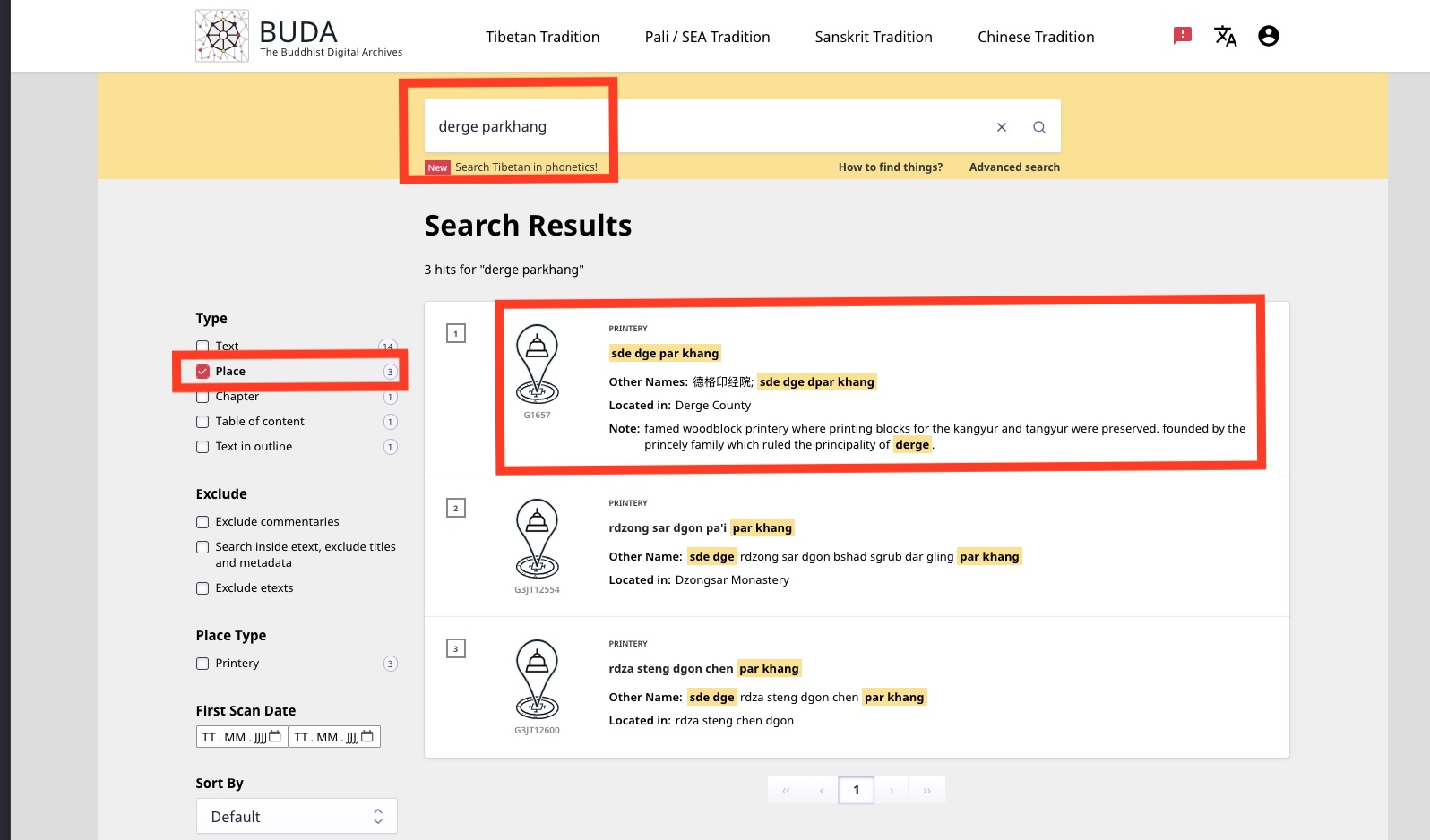
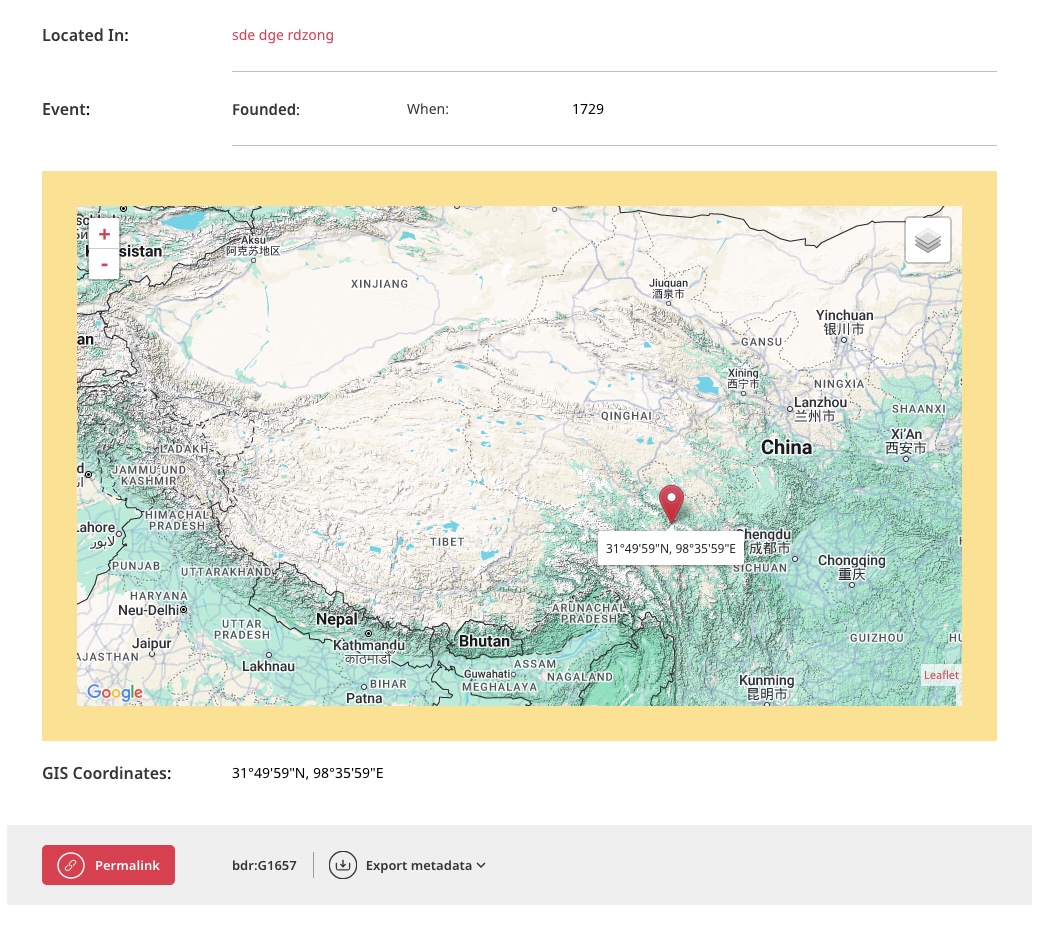
Why Use This Filter
- This filter is designed for research on the geographic distribution of Buddhist institutions, sacred landscapes, and regional historical developments.
Topic Search: Thematic Pathways through Complex Traditions
BUDA enables thematic exploration of Buddhist knowledge, linking doctrinal concepts, ritual practices, and philosophical terms across a wide range of sources.
How to Search
- On the homepage, open the dropdown menu next to the search bar.
- Select “Topics” from the list of filters.
- Enter the topic name, such as:
- A philosophical concept (for example, “emptiness”)
- A ritual or practice
- A doctrinal or scholastic term
What the Results Include
- Tagged records, including texts, digital editions, and related materials
- Faceted filters for refining by language, period, or subject
- Linked topics, providing access to related concepts and themes
- Topic mentions found in titles or textual content
Why Use This Filter
- This search mode facilitates thematic research and cross-disciplinary inquiry, helping to navigate complex tradition
What’s Next?
In the next post, the focus shifts from technical functionality to guiding principles. While BUDA offers powerful tools for searching and accessing Buddhist texts, it is equally defined by the values that shape its development. The fourth blog post explores how the Buddhist Digital Resource Center (BDRC) aligns innovation with cultural responsibility: Highlighting how collaboration, respectful access policies, and traditional knowledge systems are at the heart of its digital stewardship.
Coming up in the series:
- Digitizing the Dharma – Introducing BDRC and the Digital Preservation of Tibetan Buddhist Texts
- Buddhist Digital Archives (BUDA) in Focus - Part 1
- Buddhist Digital Archives (BUDA) in Focus - Part 2 (this post)
- Innovation Guided by Cultural Sensitivity – BDRC’s Model of Responsible Digital Stewardship
- A Personal Reflection on Accessing Tibetan Buddhist Texts Digitally on BUDA
Enjoy Reading This Article?
Here are some more articles you might like to read next: